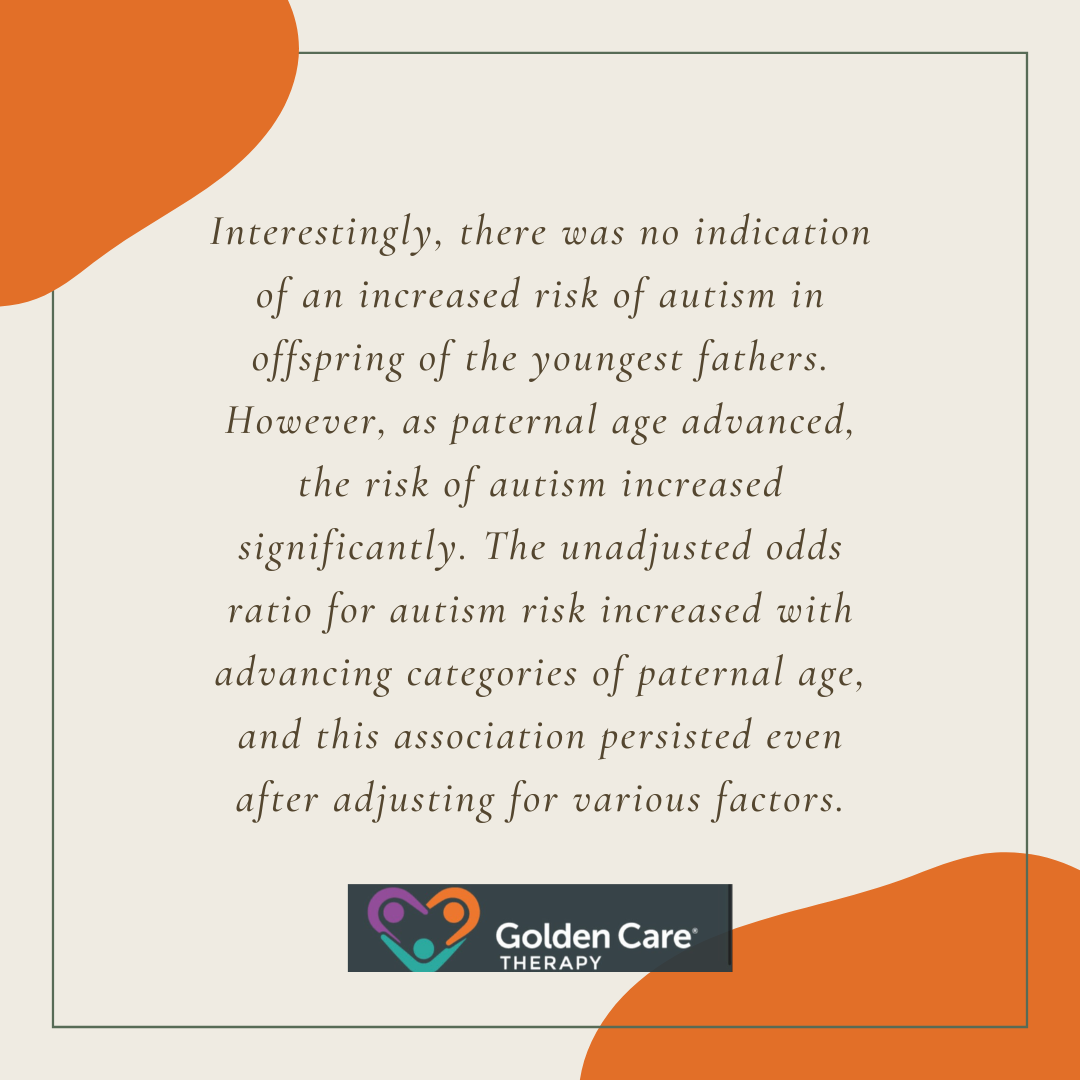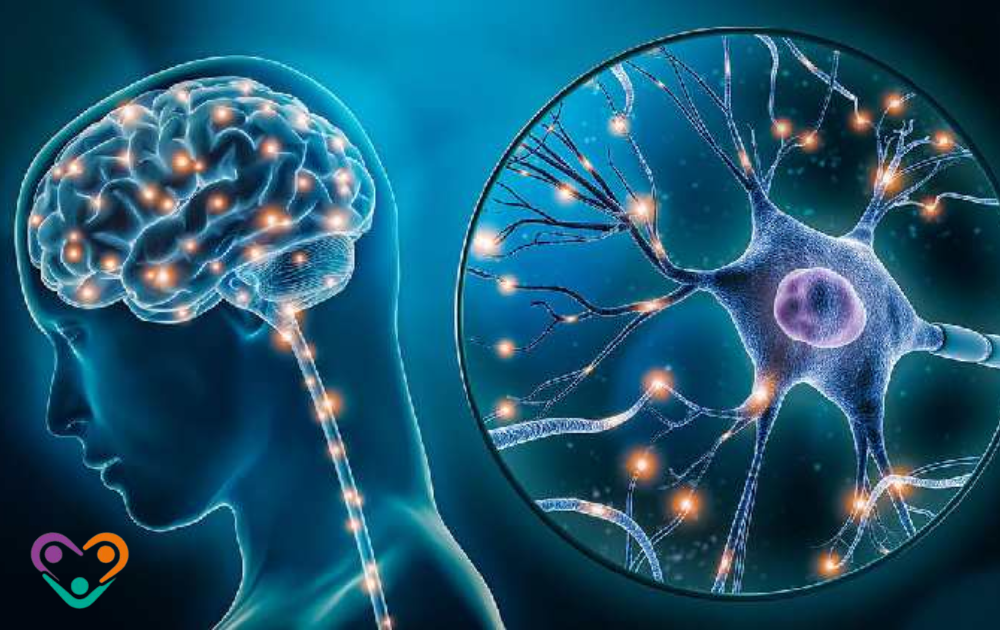A growing body of research suggests a link between paternal age and the risk of autism. A 2011 study published in Molecular Psychiatry, which analyzed data from over 5.7 million children in five countries, found that the chance of having a child with autism was higher among older fathers.
Specifically, fathers in their 40s had a 28 percent higher chance, while men in their 50s had a 66 percent higher chance, compared to fathers younger than 30.
But does it really solidify the connection between paternal age and autism? Let’s take a look.
Is There a Link Between Paternal Age and Autism?
Numerous studies have been conducted to explore the risk of autism in relation to the age of the father, revealing interesting insights into the genetic implications.
Aside from the study mentioned earlier, another studyfurther emphasized the relationship between paternal age and autism. This study indicated that older men who have or are at risk for psychiatric disorders, such as autism, tend to have children later in life and genetically pass on the disorder to their kids.
However, it’s important to note that the increased number of mutations in older men’s sperm alone can’t fully explain the higher risk of autism in their children.
How Paternal Age Affects Autism Risk
The impact of paternal age on autism risk has been attributed to the age-related changes in sperm. As men age, the sperm accumulates more mutations, which can be passed on to their offspring. These mutations may contribute to the development of autismin some cases.
A studyrevealed that offspring of men aged 40 years or older were 5.75 times more likely to have autism compared to offspring of men younger than 30 years, even after controlling for various factors.
On the other hand, advancing maternal age did not show a significant link with autism after adjusting for paternal age.
Scientists have proposed several factors that may contribute to the increased risk of autism in children born to older fathers. One hypothesis is that aging sperm carries a higher number of mutations, which are then passed on to the child. These mutations may play a role in the development of autism.
According to research, for every 10-year increase in paternal age, there is a 21 percent higher risk of autism. This finding is particularly relevant as autism diagnoses have been on the rise in recent decades, coinciding with an increase in the number of older fathers.
Impact on Offspring
Needless to say, there are significant impacts on the offspring of men who are aged 40 years and above. Understanding these effects is crucial for parents and caregivers of individuals with autism.

Moreover, the impact of paternal ageon offspring extends beyond autism and includes other neurodevelopmental disorders as well. Studies have found a significant link between between paternal age and autism risk.
This association also holds true for other disorders such as intellectual disabilities and schizophrenia.
Research has provided evidence that shows advanced paternal age increases the risk of developing autism. This increased risk may be attributed to de novo germline mutations, which are genetic changes that occur in the sperm cells, or alterations in genetic imprinting. The exact mechanisms by which paternal age influences the development of these disorders are still being studied.
Biological Insights
Learning about the biological mechanisms behind the link between paternal age and autism is crucial for unraveling the puzzle. In line with that, there are two biological insights that have emerged from research.
These are as follows:.

MicroRNA Regulation
MicroRNAs, specifically miR-132 and miR-134, have been found to be differentially regulated in both rats and humans depending on advanced paternal age. These microRNAs play a crucial role in regulating neuronal plasticity, which refers to the brain’s ability to adapt and change in response to experiences and learning.
Researchsuggests that changes in microRNA regulation associated with advanced paternal age can lead to brain morphological changes and alterations in fronto-hippocampal connectivity.
These changes in brain structure and connectivity are believed to contribute to difficulties in social interaction, a hallmark characteristic of autism.
Neuronal Plasticity
Neuronal plasticity is a fundamental process in brain development and function. It involves the creation and elimination of synaptic connections between neurons, allowing for the adaptation and refinement of neural circuits.
Perturbations in neuronal plasticity can have significant implications for brain development and may contribute to the development of neurodevelopmental disorders such as autism.
Studieshave suggested that advanced paternal age may impact neuronal plasticity, potentially affecting the development and functioning of neural circuits involved in social communication and other cognitive functions.
Disruptions in neuronal plasticity can interfere with the normal wiring of the brain and contribute to the behavioral and cognitive traitsassociated with autism.
Final Thoughts
While the link between paternal age and autism is still being studied, evidence suggests that older fathers may have a slightly higher risk of having a child with autism.
However, it’s important to remember that autism is a complex condition with many contributing factors. Regardless of age, every child deserves love and support.
So, if you’re thinking about starting or expanding your family, focus on staying healthy and informed. And remember, your dedication and care play the biggest role in your child’s development and well-being.
For support in finding the right resources, including ABA centers in New Jersey, New York, Georgia, and Indiana, reach out to Golden Care Therapy. Contact us todayto book a consultation and explore how we can assist you in your journey.



